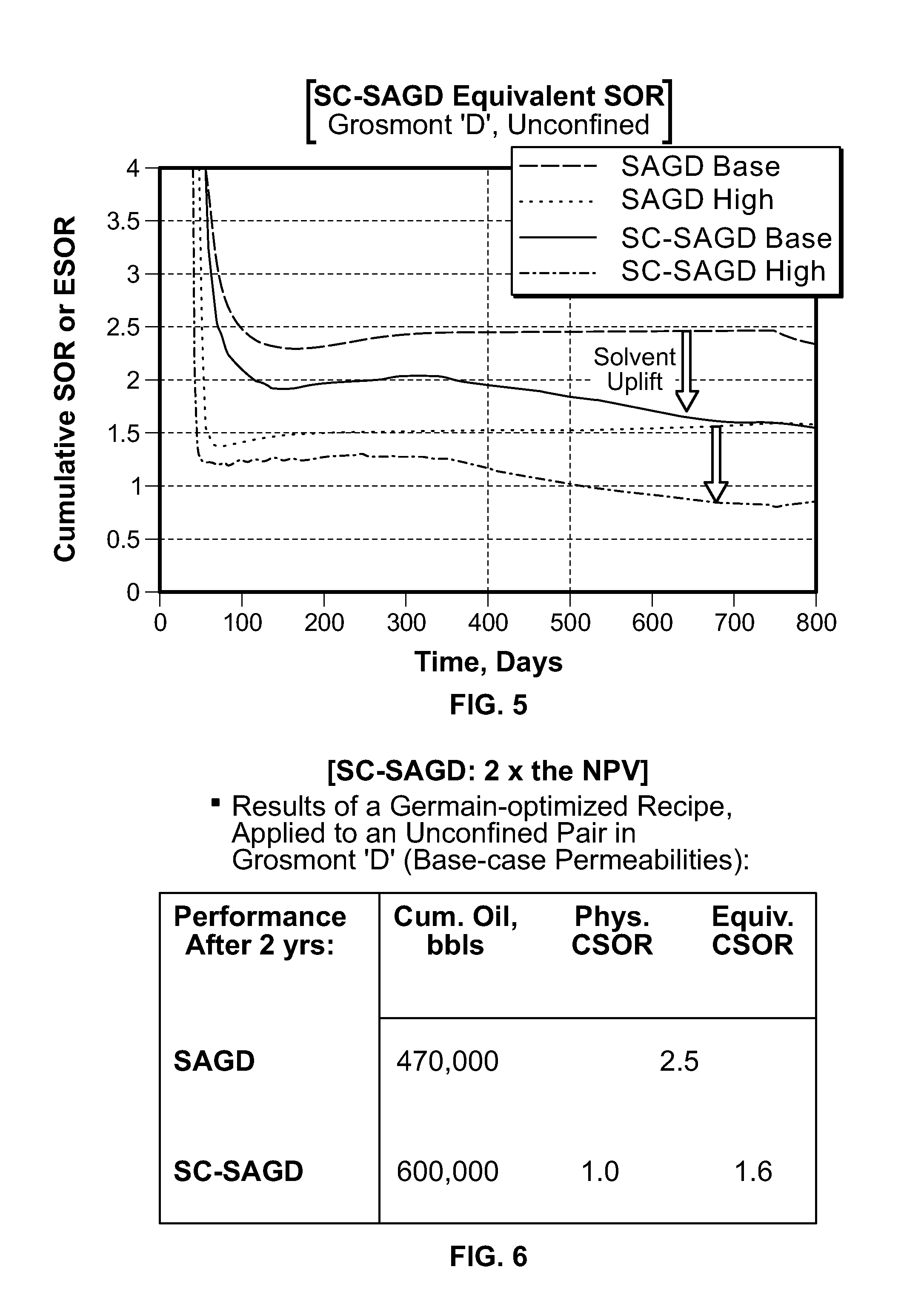Method for Viscous Hydrocarbon Production Incorporating Steam and Solvent Cycling
a hydrocarbon and solvent cycling technology, applied in the field of viscous hydrocarbon production, can solve the problems of inability to readily pump from the ground, black oil, and inability to meet the needs of mining operations, and achieve the effect of reducing the steam injection ra
- Summary
- Abstract
- Description
- Claims
- Application Information
AI Technical Summary
Benefits of technology
Problems solved by technology
Method used
Image
Examples
Embodiment Construction
[0024]For clarity of understanding, the following terms used in the present description will have the definitions as stated below.
[0025]As used herein, the terms “reservoir”, “formation”, “deposit”, are synonymous and refer to generally subterranean reservoirs containing hydrocarbons. As discussed further below, such hydrocarbons may comprise bitumen and bitumen like materials.
[0026]“Oil sands”, as used herein, refers to deposits containing heavy hydrocarbon components such as bitumen or “heavy oil”, wherein such hydrocarbons are intermixed with sand. Although the invention is described herein as being applicable to oil sands, it will be understood by persons skilled in the art that the invention may also be applicable to other types reservoirs containing bitumen or heavy oil, or other such hydrocarbon materials (i.e. heavy crude oil). However, for convenience, the terms “oil sands” and “bitumen” are used for the purposes of the following description and will be understood to refer ...
PUM
 Login to View More
Login to View More Abstract
Description
Claims
Application Information
 Login to View More
Login to View More - R&D
- Intellectual Property
- Life Sciences
- Materials
- Tech Scout
- Unparalleled Data Quality
- Higher Quality Content
- 60% Fewer Hallucinations
Browse by: Latest US Patents, China's latest patents, Technical Efficacy Thesaurus, Application Domain, Technology Topic, Popular Technical Reports.
© 2025 PatSnap. All rights reserved.Legal|Privacy policy|Modern Slavery Act Transparency Statement|Sitemap|About US| Contact US: help@patsnap.com



